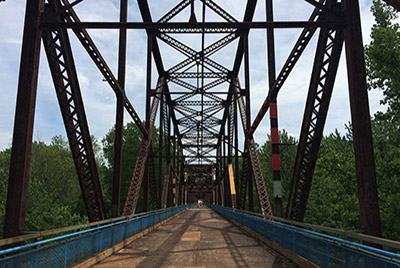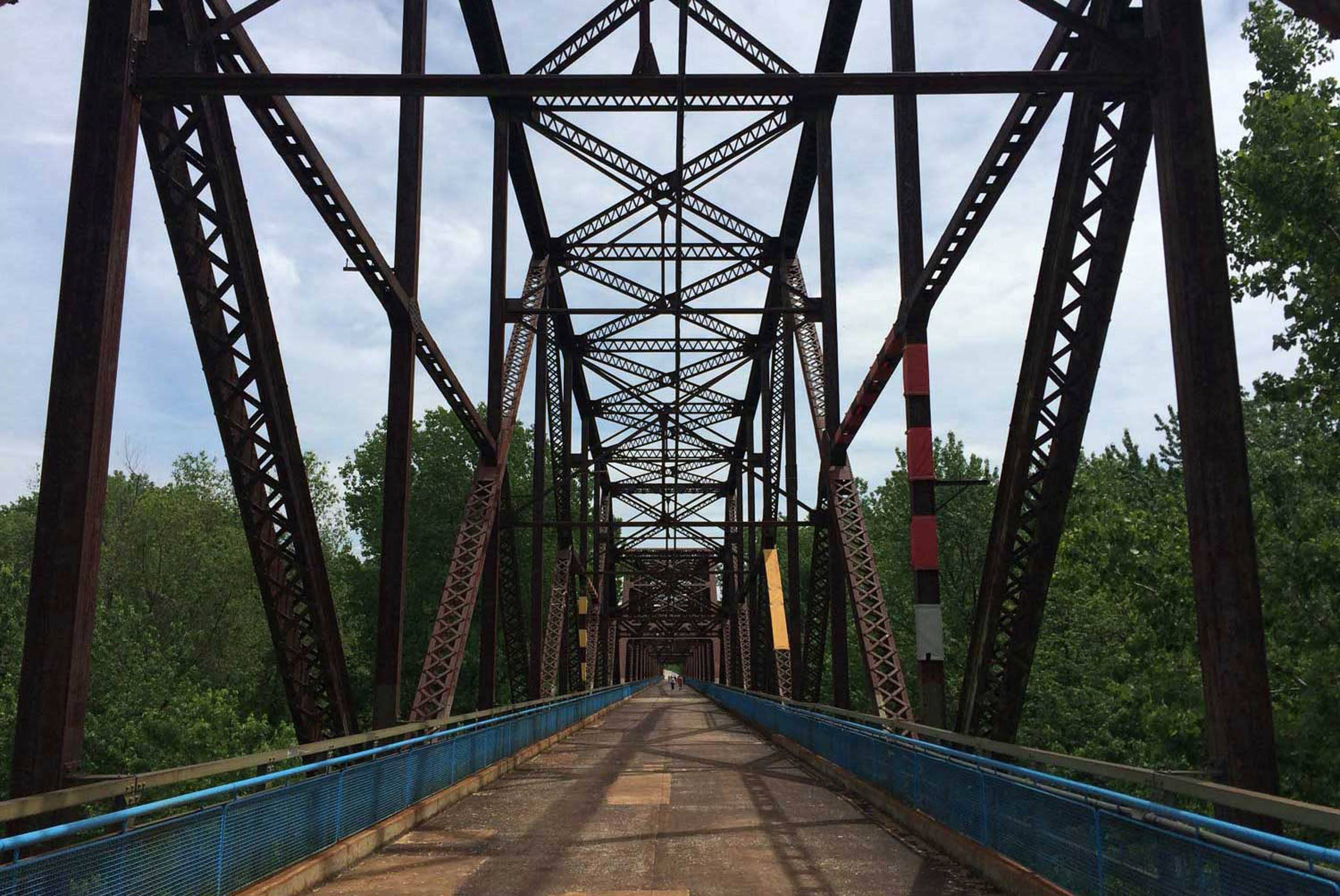



The Chain of Rocks Bridge opened in 1929, carrying the Route 66 bypass route around the city. It is named for a rocky outcrop which creates a section of rapids in the river. The shoals were a severe navigational hazard, to the point that they were eventually bypassed entirely with the 8-mile-long Chain of Rocks Canal. Today, an artificial dam makes the rapids submerged for much of the year. The bridge's famous 22-degree bend is the result of a confluence of several problems. According to one source, the bridge's builders owned parcels of land that were not directly across the river from each other. The Army Corps of Engineers would not allow them to build the bridge on a diagonal path across the river; therefore the bridge crosses the navigable portion of the river on a perpendicular path, then changes direction in the middle to touch down on the right parcel on the Illinois side. A second source states that a straight bridge would either not have had foundations on solid bedrock, or else would have blocked river traffic from aligning with the river current, risking boat-bridge collisions. Set in a rather isolated spot, the mile-long bridge was never a money maker, and the bridge company went bankrupt in 1931. Ownership passed to the town of Madison. The bridge was superseded by the nearby I-274 bridges in 1965. Stripped of its tolls by Federal mandate, the bridge was closed in 1968. Chain of Rocks Bridge was nearly demolished in 1975, until a sharp drop in the price of scrap meant that the demolition would not pay for itself. Abandoned and left to rot, it served as a set for the 1981 thriller Escape From New York. Regional bicycle group TrailNet successfully lobbied to have the bridge converted to a bike and walking path; it reopened in 1999 with lighting, observation bump-outs, and various other amenities. It remains a popular recreation spot as well as a viewing platform for observing bald eagles. It also offers an excellent view of the city's two water intake structures. It was named to the National Register of Historic Places in 2006.